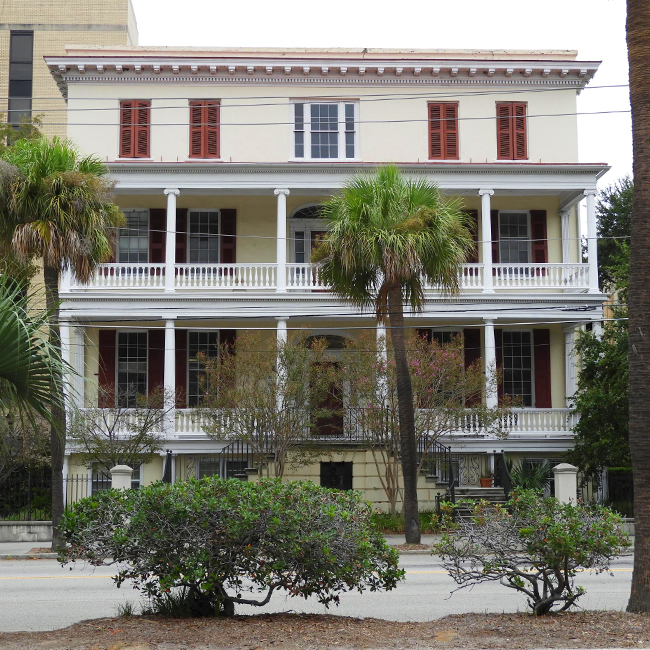
286 Calhoun Street | Jonathan Lucas House
This is the third of three early 19th century houses nestled within the medical complex on the way to the Ashley River. We've explored the other houses in the last two posts. Again, we're in a marshy area close to the saw and rice mills located close to the Ashley River.
The Lucas House is not dwarfed by the surrounding tall, sterile medical buildings; instead, this house stands out as elegant and imposing. Three stories high with a raised basement, 286 Calhoun has piazzas fronting on the first and second stories. An interesting feature is that both the main door at the top of the stairs and the door immediately above it on the second floor have elliptical fanlights.
286 Calhoun is on the National Register of Historic Places and was built in the Federal style of architecture by Jonathan Lucas, Jr. between 1803 and 1809. Jonathan Lucas, Jr. was born in England; his father, a millwright, immigrated to Charleston with his family right after the American Revolution. Lucas Sr. brought his knowledge and several ideas that revolutionized the rice industry in America. Before Lucas Sr. arrived here, rice milling was done by hand, and it was a tedious job. He built the first rice mills that were powered by water and tides. Jonathan Lucas, Jr. improved on his father's innovations by bringing steam power to rice mills, along with other advances in techniques for rice milling.
286 Calhoun remained in the family until 1867 when it was sold. Later it became part of the City Hospital, serving as Riverside Infirmary. In 1921, the infirmary became a home for nurses. Roper Hospital replaced City Hospital, and after the current Roper Hospital was built, 286 remained part of the medical complex owned by the Medical Society of South Carolina.
From its origins in the Lucas family to its maintenance by the medical community, 286 Calhoun Street presents us with another example of Charleston's versatility in the use of her architecture.
Next week, we'll continue to explore Charleston's history through her structures.



